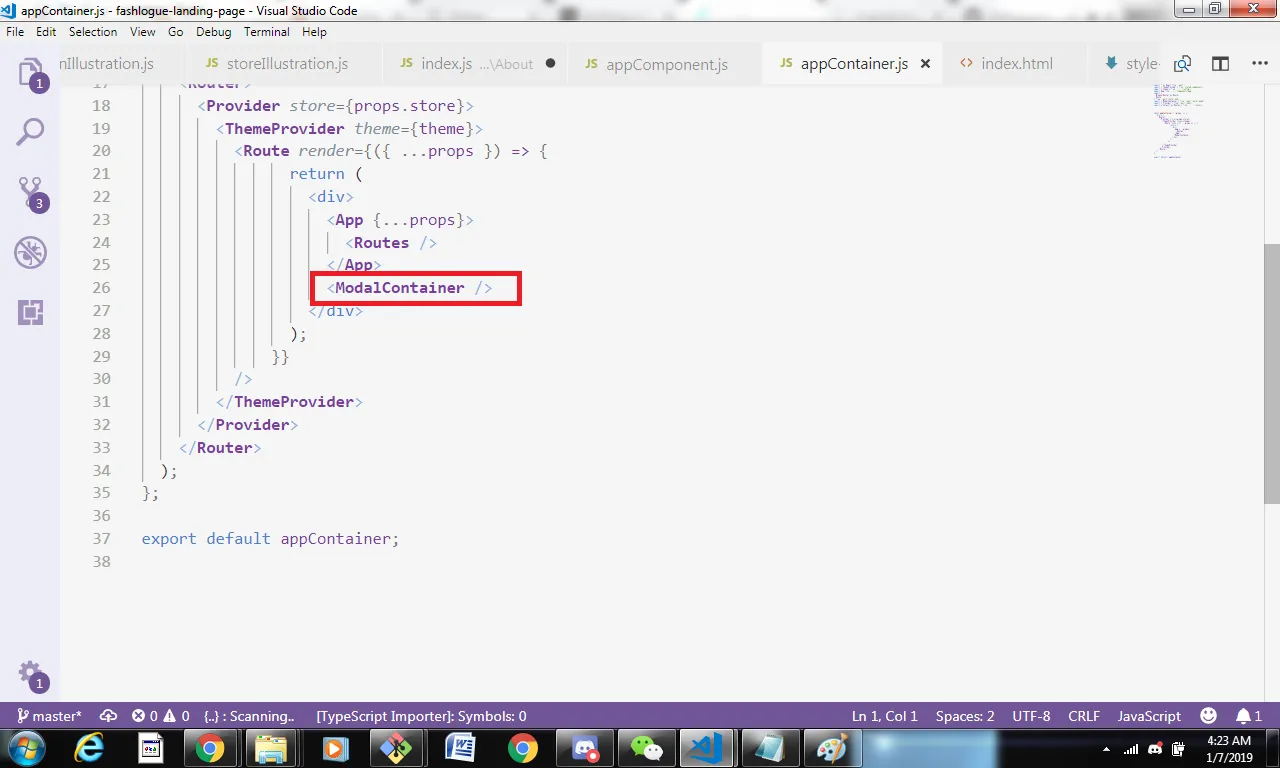Repository
https://github.com/fashlogue/fashlogue-landing-page
Pull Request
https://github.com/fashlogue/fashlogue-landing-page/pull/4
Update on the project and about PR
The fashlogue project is undergoing evolution, the fashlogue landing page gives details about the project. The authentication modal for various platform which include steemconnect sand instagram was added. The package react- router-modal was used for the implementation of the auth screen.
Brief peep into building a modal with react router modal package.

Modal can be built with different method, it can be created with react router modal or using react portal which appends a container outside Dom tree. to begin install the package by runing
yarn add react-router-moder --save
Next up we need to set up the router file to use this react routermodal
import * as React from 'react';
import { Route } from 'react-router-dom';
import { ModalRoute } from 'react-router-modal';
import { HomeScreen } from '../screens/HomeScreen';
import { AuthChoiceScreen } from '../screens/AuthChoiceScreen';
const baseModalProps = {
inClassName: 'react-router-modal__modal-in',
outClassName: 'react-router-modal__modal-out',
backdropClassName: 'react-router-modal__backdrop',
backdropInClassName: 'react-router-modal__backdrop-in',
backdropOutClassName: 'react-router-modal__backdrop-out',
outDelay: 500,
};
const routeList = [
{
component: HomeScreen,
isModal: false,
isExact: true,
path: '/',
},
{
component: AuthChoiceScreen,
isModal: true,
isExact: true,
path: '*/app-auths',
}
];
export default class Routes extends React.Component {
constructor (props) {
super(props);
}
/**
* Renders routes defined in the `routeList` params.
*
* @param {Array} routeList - List of routes.
* @param {Object} props - Route props.
*
* @returns React.ReactNode
*/
renderRoutes (
routeList,
props,
) {
return routeList.map((route, i) => (
route.isModal ?
<ModalRoute
component={route.component}
exact={route.isExact}
key={i}
parentPath={props.match.path}
path={route.path}
{...baseModalProps}
/> :
<Route
component={route.component}
exact={route.isExact}
key={i}
path={route.path}
{...baseModalProps}
/>
));
}
render () {
return (
<Route render={(props) => {
return (
<div style={{
width: '100%',
}}>
{this.renderRoutes(routeList, props)}
</div>
);
}} />
);
}
}
Above, we created a class for our routing and in this class the snippet below uses either the regular routing or the modal routing.
renderRoutes (
routeList,
props,
) {
return routeList.map((route, i) => (
route.isModal ?
<ModalRoute
component={route.component}
exact={route.isExact}
key={i}
parentPath={props.match.path}
path={route.path}
{...baseModalProps}
/> :
<Route
component={route.component}
exact={route.isExact}
key={i}
path={route.path}
{...baseModalProps}
/>
));
}
We iterate through the routeList, and run checks if is modal is set to true or false and render the approiate routing menchanism.
Lastly, a modalContainer should be added to the appContainer to render the modal.

Next up
The setting up of the main application.
Github Account
https://github.com/ogbiyoyosky